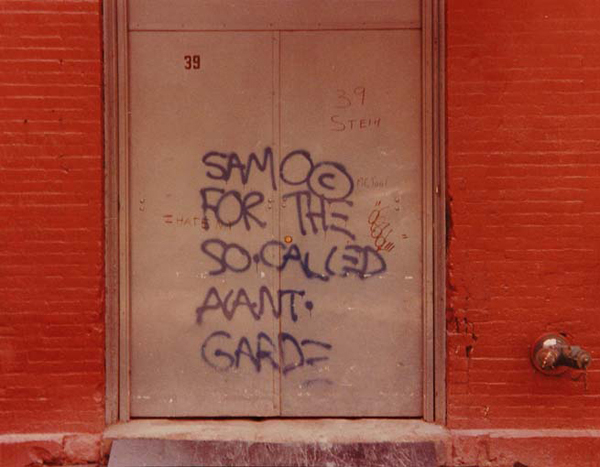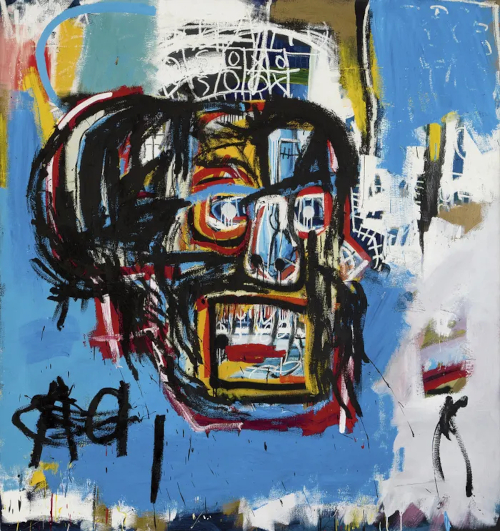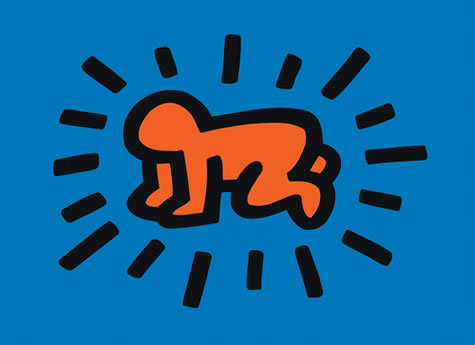New York City in the early 1980s was a place growing into itself. From an outside perspective, it was a city that was dirty, rife with crime, and, having recently emerged from a 1975 bankruptcy scare, broke. However, underneath the city’s rough exterior was a great expansion of popular culture. Nightlife was booming. Ideas were being exchanged. Unlike today’s NYC, rent was low enough to accommodate artists.
Perhaps the most pertinent example of this cultural expansion was the rise of street art. This movement, led by key figures Jean-Michel Basquiat and Keith Haring, used visual works of art in everyday parts of the city to convey political messages.
Jean-Michel Basquiat
Basquiat was born in 1960 and grew up in Park Slope, Brooklyn. From a young age, he showed artistic abilities and attended several art schools. However, he was also rebellious and often skipped class. His first work with street art was under the pseudonym “SAMO” in cooperation with his school friend, Al Diaz.

During this time, Basquiat gained recognition and underground acclaim for his work. At the age of 20, he began solo work as a studio artist, but maintained his graffiti art style. At the peak of his career, he was making $1.4 million per year and participating in worldwide art exhibitions.

Basquiat’s activism manifested itself in dichotomies present in his art. He focused on the ironies of segregation vs. integration, wealth vs. poverty, and inner experience vs. exterior appearance, among other opposites. Despite his success, he was plagued by drug addiction and died of a heroin overdose at the age of 27.
Keith Haring
Keith Haring was born in 1958 in Reading, PA. Similarly to Basquiat, he attended art schools in his youth but dropped out to focus on his own creations. He moved to the Lower East Side of New York at age 20 and began his iconic drawings as chalk drawings on city subways. His art was known for its motifs of love and sexual imagery, and because of its simplistic yet captivating designs, it quickly drew media attention.

Haring’s work garnered museum exhibitions and widespread acclaim. In a move to make his art more widely available to the public, Haring opened his Pop Shop in SoHo in 1986. By selling shirts, posters, and other items featuring his art, he made his creations accessible in contrast with most major artists who only sold pieces at high prices to art dealers.

It’s a large part of the reason why his art is so widely recognized and seen everywhere today. The activism in his art was focused around spreading awareness of the AIDS epidemic and encouraging safe sex. He established the Keith Haring foundation in 1989, and it continues to support hundreds of AIDS-related organizations to this day. He tragically died of AIDS related complications in 1990 at the age of 31.
Legacy
Both of these artists died young, but their work changed the way people think about art. Street art was elevated. Suddenly, graffiti was being sold in exhibitions at prices matching those of studio pieces. More importantly, these artists brought art to the masses. This was art that was accessible and understandable. People can relate to Basquiat’s messages of anti-racism, anti-capitalism, and greed. They can relate to Haring’s messages of birth, death, love, sex, joy, and community. They made art for the common person, and the art world hasn’t been the same since they loudly burst onto the scene.

